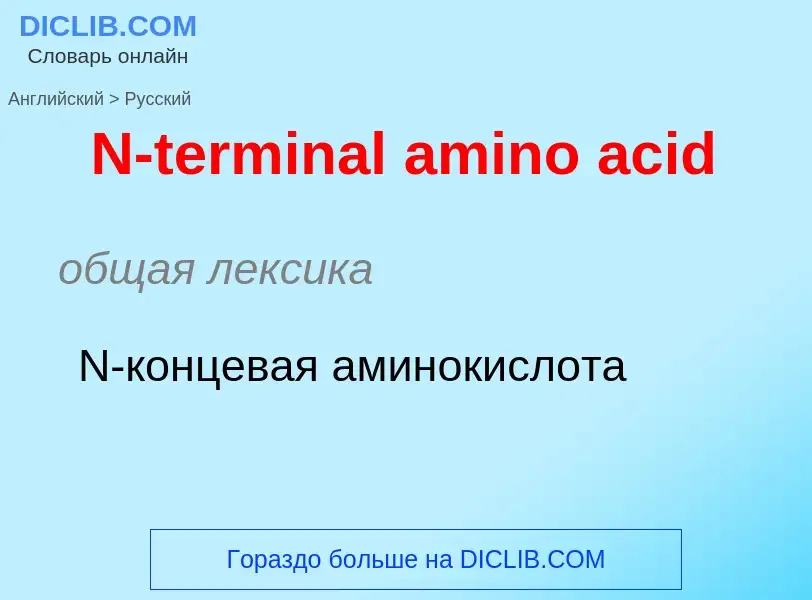Перевод и анализ слов искусственным интеллектом ChatGPT
На этой странице Вы можете получить подробный анализ слова или словосочетания, произведенный с помощью лучшей на сегодняшний день технологии искусственного интеллекта:
- как употребляется слово
- частота употребления
- используется оно чаще в устной или письменной речи
- варианты перевода слова
- примеры употребления (несколько фраз с переводом)
- этимология
N-terminal amino acid - перевод на Английский
общая лексика
N-концевая аминокислота
общая лексика
незаменимая аминокислота
медицина
эссенциальная аминокислота
общая лексика
гидантоиновая кислота
Определение
Википедия
Protein metabolism denotes the various biochemical processes responsible for the synthesis of proteins and amino acids (anabolism), and the breakdown of proteins by catabolism.
The steps of protein synthesis include transcription, translation, and post translational modifications. During transcription, RNA polymerase transcribes a coding region of the DNA in a cell producing a sequence of RNA, specifically messenger RNA (mRNA). This mRNA sequence contains codons: 3 nucleotide long segments that code for a specific amino acid. Ribosomes translate the codons to their respective amino acids. In humans, non-essential amino acids are synthesized from intermediates in major metabolic pathways such as the Citric Acid Cycle. Essential amino acids must be consumed and are made in other organisms. The amino acids are joined by peptide bonds making a polypeptide chain. This polypeptide chain then goes through post translational modifications and is sometimes joined with other polypeptide chains to form a fully functional protein.
Dietary proteins are first broken down to individual amino acids by various enzymes and hydrochloric acid present in the gastrointestinal tract. These amino acids are absorbed into the bloodstream to be transported to the liver and onward to the rest of the body. Absorbed amino acids are typically used to create functional proteins, but may also be used to create energy. They can also be converted into glucose. This glucose can then be converted to triglycerides and stored in fat cells.
Proteins can be broken down by enzymes known as peptidases or can break down as a result of denaturation. Proteins can denature in environmental conditions the protein is not made for.



